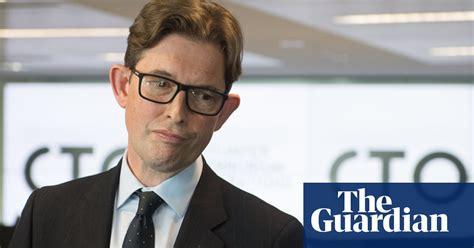
Surveillance centre hailed as critical in capture of escaped terror suspect
The capture of escaped terrorism suspect Daniel Khalife is being hailed as a vindication of a decision to bring together police and the intelligence agencies into a new £412m surveillance centre.
The four-day search for Khalife was coordinated at the Counter Terrorism Operations Centre (CTOC) in West Brompton, central London, where for the first time in a manhunt counter-terror police worked alongside members of MI5 and MI6.
The situation room at the centre has access to “cutting edge” spy technology including facial recognition, the CCTV camera network and phone tracking data. The use of this surveillance, including intercepted phones of those linked to Khalife, are all thought to have been used in the search.
The Met’s counter-terrorist commander, Dominic Murphy, said the joint working in the centre, which opened in 2021, played a key role in Khalife’s capture.
Speaking to reporters on a video call he said: “One of the unusual things about this investigation is for the first time we’ve run this type of inquiry from our new CTOC, which brings counter-terrorism policing, SO15, into close proximity to all our partners.”
He added: “This was the first big operation they did and it shows this is working because we’re working very closely.”
The Mail on Sunday reported that the security forces obtained phone tapping warrants on those linked to Khalife. This led police to a house in Richmond on Saturday morning where they just missed Khalife, according to the Mail.
Police confirmed that shortly after the raid in Richmond, they received a tipoff that Khalife had been seen in Spencer Road in Chiswick and another that he had been seen at the junction of Chiswick Mall and Church Street. However, again they could not find him.
But then at 10.40am he was found several miles north-east of Chiswick riding a bike on a tow path in Greenford. Police appeared to be lying in wait. Witnesses said he was pushed off his bike by an armed plain-clothes officer and soon after up to 60 officers arrived at the scene.
Murphy said Khalife’s arrest was the culmination of “an incredible effort by the investigation team”. He also thanked the public for more than 100 tipoffs of potential sightings.
One of the biggest breakthroughs came on Friday when a member of the public said they had seen Khalife walking away from the food delivery lorry he had used to escape from Wandsworth category B prison on Wednesday. The sighting near the south exit of Wandsworth roundabout allowed police to narrow the search.
Murphy defended the time it took to catch Khalife. Speaking on Saturday evening, he told reporters: “It’s been about 75 hours since he went missing from the prison to the point of his arrest.
“That’s pretty quick given the challenges. It really gathered momentum yesterday (Friday) afternoon, with a number of calls from the public, but really took a different course last night when we did an intelligence-led search in the Richmond area in the early hours.
“Whilst we didn’t find him at that search, while we were there we had a number of calls over the next hour or two, giving us various sightings of him.”
The CTOC was built in response to intelligence failures exposed by a string of terrorist attacks in 2017 in Westminster, the Manchester Arena, London Bridge, the Finsbury Park mosque and Parsons Green underground station. In a response to a critical report on those attacks by the barrister David Anderson, the government pledged to overhaul the system with a greater emphasis on sharing intelligence between agencies.
When the CTOC was opened, Ken McCallum, the director general of MI5, said: “We know our chances of success are better when we combine the knowledge and the skills of experts from different organisations, fighting terrorism as a single team. CTOC is a massive next step on that journey – a world first.
“CTOC is built around the needs of the public, not the convenience of institutions.”
Source » theguardian.com





